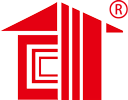Lida Group China Prefabricated House Supplier | One-stop Solution for Modular House, Container House!  Marketing@lidajituan.com
Marketing@lidajituan.com
What Is A Prefab Home?
Prefab homes are growing in popularity as a convenient and cost-effective option for homeowners. These types of homes are pre-manufactured off-site and then assembled on-site, often requiring less time and labor than traditional construction methods.
But what exactly is a prefab home? And how does it compare to other types of homes? In this article, we’ll explore the basics of prefab homes, their benefits, and their drawbacks.
What is a Prefab Home?
A prefab home, short for prefabricated home, is a type of home that is built off-site in a manufacturing facility. The individual components of the home, such as the walls, floors, and roof, are produced in a factory and then transported to the final building site for assembly.
There are several types of prefab homes, including modular homes, panelized homes, and kit homes. Modular homes are constructed as separate pre-built modules that are then combined on-site to form the complete structure. Panelized homes are similar to modular homes, but the individual panels are larger and include multiple components such as framing, insulation, and drywall. Kit homes come in pre-cut pieces that are assembled on-site like a puzzle.
Benefits of a Prefab Home
1. Cost-effective
One of the main benefits of a prefab home is its cost-effectiveness. Since the components are produced in a manufacturing facility, there’s less waste, and the process is more efficient. The savings from this efficiency often result in a lower overall cost than traditional construction methods.
2. Speed of construction
Prefab homes can be constructed in a fraction of the time it takes to build a traditional home. Since the components are pre-built and just need to be assembled, the process can be completed much faster.
3. Quality control
Manufacturers of prefab homes follow strict quality control standards to ensure that each component is built to the highest quality. This level of consistency isn’t always possible in traditional construction, where factors such as weather, on-site mistakes, and other variables can affect the quality of the final product.
4. Customizability
Prefab homes can be designed and customized to the homeowner’s specifications. Whether it’s a small starter home or a large, luxurious house, manufacturers can accommodate a wide range of design and functionality requests.
5. Sustainability
Prefab homes are often designed with sustainability in mind. Since the manufacturing process generates less waste, and the homes are often built with energy-efficient materials and systems, they can be more environmentally friendly than traditional homes.
Drawbacks of a Prefab Home
1. Limited floor plans
While prefab homes can be customized to a degree, the floor plans are often limited compared to traditional construction. This limitation can make it more challenging to find the perfect layout for your needs.
2. Land limitations
Another issue with prefab homes is that they’re often not suitable for large or irregularly shaped plots of land. Since the components are pre-built, they need to be transported to the site and assembled, which can be difficult or impossible on certain types of land.
3. Financing options
Financing a prefab home can be more challenging than traditional construction. Since the process is less familiar to lenders, the terms and options available may be limited.
4. Perception
Some people still view prefab homes as makeshift or temporary structures, which can affect their resale value and perception in the real estate market.
5. Transportation and setup costs
Finally, the costs of transporting and setting up a prefab home can be prohibitive. While the overall cost of the home may be lower, these costs can add up quickly, especially if the home needs to be transported over long distances or on challenging terrain.
Conclusion
Overall, prefab homes are an attractive option for homeowners looking for a cost-effective, customizable, and efficient way to build their dream home. While there are some drawbacks to consider, their benefits often outweigh the downsides. As the popularity of prefab homes continues to grow, we can expect to see more companies and innovations in this exciting field.
Container homes have gained popularity over the years due to their cost-effectiveness, sustainability, and unique design.
Container houses, also known as shipping container homes, are becoming an increasingly popular choice for affordable housing.
Container houses have gained popularity in recent years as a sustainable and affordable housing solution for people all around the world.
We welcome you to contact us for more information of
prefab house and look forward to working with you !
About Lida Group
CONTACT Lida Group Container House Supplier
Tel: +86-532-88966982 88965892
Whatapp/Wechat: +86-13793209022
Email: Marketing@lidajituan.com
Website: Prefabricated House Supplier/ Container House China / China Prefabricated House
Head Office: 5th Floor, Building A, Darron Center,No.180,Haier Road, Qingdao, 266000,China

Lida Group
Tel: +86-532-88966982 88965892
Whatapp/Wechat: +86-13793209022
Email: Marketing@lidajituan.com
Website: Prefabricated House Supplier/ Container House China / China Prefabricated House
Head Office: 5th Floor, Building A, Darron Center,No.180,Haier Road, Qingdao, 266000,China



